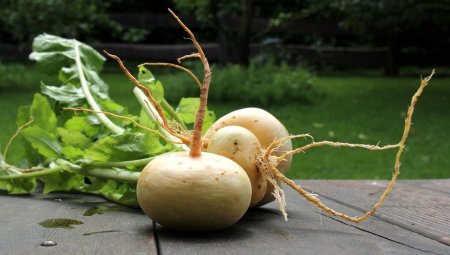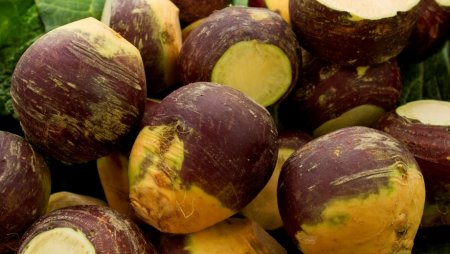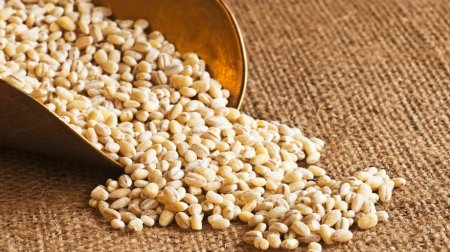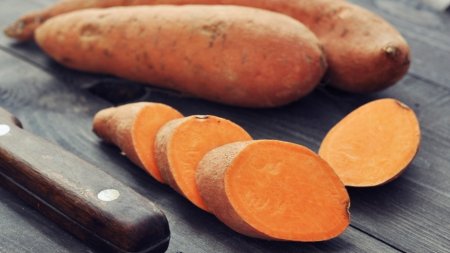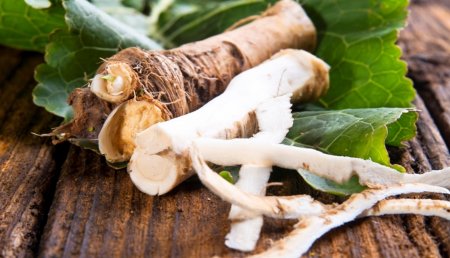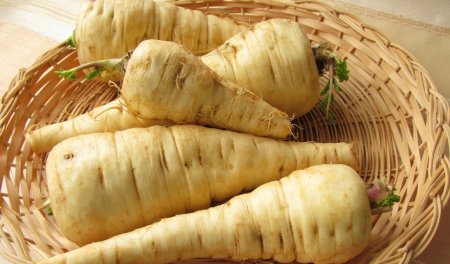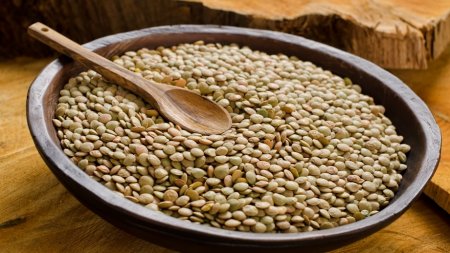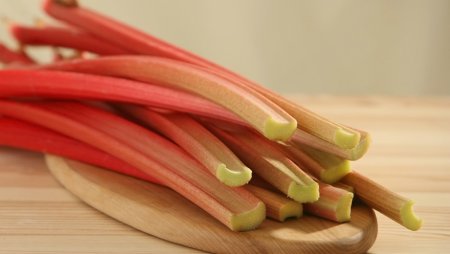9 useful products, which are undeservedly forgotten
1. Almost turnip to the 20th century was the guest of honor of Russian table. Root vegetable soups, cereal, pie fillings, pickles. Today, turnips can safely compare with exotic vegetables, dishes of which - a rare phenomenon. Unfortunately - for analogues in the nutritional value of this nondescript-looking root vegetables look difficult. As a source of vitamin C, carotene, mineral salts, turnip is an effective remedy for beriberi, a high calcium content (along with magnesium, improves its assimilation) allows vegetable help prevent rickets and bone disease. The pulp root contains natural antibiotic to inhibit the growth of almost all kinds of bacteria and fungi (except aureus and Escherichia coli), making rap acts as an effective tool for the treatment of bronchitis, laryngitis, asthma, toothache, and many other ailments.
2. The Swede - another valuable vegetables that benefit undeservedly forgotten. Content of vitamin C turnip exceeds the onions, tomatoes and oranges, approaching in its performance to the cabbage. Dishes from the "Swedish turnip" - and it can be salads, soups, stews - are useful for diabetics and people who are obese. Crude fiber in its composition perfectly cleanses the intestines, and the juice extracted from the pulp, has a laxative effect. Vegetable, in appearance resembling beets, successfully used in folk medicine for the treatment of skin diseases, respiratory diseases, and to cleanse the body.
3. Oatmeal Flour from grains of barley, peas and oats, oatmeal called - old Russian product is widely used for cooking porridge, soups, cakes, jelly, and even tea drinks. Oatmeal advantage compared with conventional flour in its high nutritional value (due to the remnants of grain fractions), as well as a special taste and aroma reminiscent of cocoa. It is noteworthy that eating oatmeal is not necessary to cook - just make a product with hot milk or water. Oatmeal is rich in bioflavonoids, whose tasks include the regulation of the immune and endocrine systems, cleansing the body of toxic substances, as well as active participation in the regeneration of cells. B vitamins have a positive effect on the nervous system, memory, hair and nails, and rare avenanthramide antioxidants that can be found only in oats, prevent the formation of plaque on the walls of blood vessels. The unique properties of oatmeal make it indispensable for a healthy diet - but, unfortunately, it, like many other native Russian products on the shelves are almost not found.
4. Jerusalem artichoke - another root vegetable, eating a potato which ousted. However, this sweet-tasting vegetables are much more useful than his brother, surpassing iron content not only potatoes, but carrots, beets and turnips. Root crop, often called Jerusalem artichoke, in large quantities contains inulin - a natural analogue of insulin to regulate blood sugar levels, making it the number one product of the artichoke in the diet of people with diabetes.
5. Horseradish is a traditional for our corners of the plant, which has a sharp spicy taste also appears on the modern table less often. However, neglect of horseradish has no basis: the plant is ahead of many vegetables on the content of carotene, B vitamins, indigestible crude fiber, improve bowel function, and the percentage of vitamin C in its leaves exceeds citrus indicators, second only to black currants and rose. Speaking about the benefits of horseradish, it should be noted its high antibacterial properties, is achieved through the lysozyme - an antibiotic, for the most destructive microbes. Thus, the plant is widely used in the treatment of angina, pertussis, inflammation of the urinary canals, but also is an effective means for elimination from the body helminths.
6. Radish Another half-forgotten vegetable, the use of which honey was considered "a cure for all diseases." And today, a little bitter taste radish has not lost its healing properties. It is believed that food from it contribute to improve the appetite and improve digestion, as an effective tool for intestinal atony, constipation, cholecystitis, cholelithiasis. In folk medicine, radish used as pulp warming and wound-healing agent in the treatment of septic wounds, ulcers, arthritis and rheumatism.
7. The root of the parsnip - crop grown where today rarely - in appearance like a carrot, but, unlike it is white in color. The sweet, slightly spicy taste vegetable can be used in the preparation of various purees, sauces, canned food. It is believed that regular use parsnip prevents the development of cardiac pathologies, urolithiasis, salt deposits, but also reduces blood sugar and cholesterol. Besides roots, have a therapeutic effect and leaves of plants used as condiments spicy food. Due to the high vitamin content of a decoction of leaves parsnip effective in treating coughs, colds, and weakened immunity.
8. Lentils. It is a product of the legume family, being widespread in ancient Rome, Greece and Egypt, unjustly ignore in today's world. However, the dish of lentils it much more useful related crops: peas, beans, chickpeas. Thus, lentils portion contains about 90% of the daily folate norm. In addition, the product is rich in unsaturated fatty acids Omega-3 and Omega-6, responsible for the state of cell membranes, but are not synthesized by the body. At the person gets lentil plant protein, fiber, vitamins, minerals, trace elements and amino acids are useful. One of these, tryptophan, is responsible for the production of serotonin, the mood-enhancing and stress resistance.
9. Rhubarb. Plant with red petioles and large green leaves today rarely seen on the vegetable beds, whereas in Russia a long time was considered the most valuable medicinal rhubarb culture. In the food used only the stalk of rhubarb, which has a pleasant taste with a slight acidity, which usually quenched with the addition of sugar. Vegetable obtained tasty and healthy desserts, rich in carbohydrates, vitamins (B, C, PP), pectin, citric and malic acids. The use of rhubarb promotes better working digestive system, being used as a laxative and cholagogue, and is the prevention of tuberculosis, anemia, diseases of the heart, lungs, colds. Babies vegetable should be consumed with caution: the high content of oxalic acid in rhubarb on a background of an immature digestive system can cause severe poisoning.
2. The Swede - another valuable vegetables that benefit undeservedly forgotten. Content of vitamin C turnip exceeds the onions, tomatoes and oranges, approaching in its performance to the cabbage. Dishes from the "Swedish turnip" - and it can be salads, soups, stews - are useful for diabetics and people who are obese. Crude fiber in its composition perfectly cleanses the intestines, and the juice extracted from the pulp, has a laxative effect. Vegetable, in appearance resembling beets, successfully used in folk medicine for the treatment of skin diseases, respiratory diseases, and to cleanse the body.
3. Oatmeal Flour from grains of barley, peas and oats, oatmeal called - old Russian product is widely used for cooking porridge, soups, cakes, jelly, and even tea drinks. Oatmeal advantage compared with conventional flour in its high nutritional value (due to the remnants of grain fractions), as well as a special taste and aroma reminiscent of cocoa. It is noteworthy that eating oatmeal is not necessary to cook - just make a product with hot milk or water. Oatmeal is rich in bioflavonoids, whose tasks include the regulation of the immune and endocrine systems, cleansing the body of toxic substances, as well as active participation in the regeneration of cells. B vitamins have a positive effect on the nervous system, memory, hair and nails, and rare avenanthramide antioxidants that can be found only in oats, prevent the formation of plaque on the walls of blood vessels. The unique properties of oatmeal make it indispensable for a healthy diet - but, unfortunately, it, like many other native Russian products on the shelves are almost not found.
4. Jerusalem artichoke - another root vegetable, eating a potato which ousted. However, this sweet-tasting vegetables are much more useful than his brother, surpassing iron content not only potatoes, but carrots, beets and turnips. Root crop, often called Jerusalem artichoke, in large quantities contains inulin - a natural analogue of insulin to regulate blood sugar levels, making it the number one product of the artichoke in the diet of people with diabetes.
5. Horseradish is a traditional for our corners of the plant, which has a sharp spicy taste also appears on the modern table less often. However, neglect of horseradish has no basis: the plant is ahead of many vegetables on the content of carotene, B vitamins, indigestible crude fiber, improve bowel function, and the percentage of vitamin C in its leaves exceeds citrus indicators, second only to black currants and rose. Speaking about the benefits of horseradish, it should be noted its high antibacterial properties, is achieved through the lysozyme - an antibiotic, for the most destructive microbes. Thus, the plant is widely used in the treatment of angina, pertussis, inflammation of the urinary canals, but also is an effective means for elimination from the body helminths.
6. Radish Another half-forgotten vegetable, the use of which honey was considered "a cure for all diseases." And today, a little bitter taste radish has not lost its healing properties. It is believed that food from it contribute to improve the appetite and improve digestion, as an effective tool for intestinal atony, constipation, cholecystitis, cholelithiasis. In folk medicine, radish used as pulp warming and wound-healing agent in the treatment of septic wounds, ulcers, arthritis and rheumatism.
7. The root of the parsnip - crop grown where today rarely - in appearance like a carrot, but, unlike it is white in color. The sweet, slightly spicy taste vegetable can be used in the preparation of various purees, sauces, canned food. It is believed that regular use parsnip prevents the development of cardiac pathologies, urolithiasis, salt deposits, but also reduces blood sugar and cholesterol. Besides roots, have a therapeutic effect and leaves of plants used as condiments spicy food. Due to the high vitamin content of a decoction of leaves parsnip effective in treating coughs, colds, and weakened immunity.
8. Lentils. It is a product of the legume family, being widespread in ancient Rome, Greece and Egypt, unjustly ignore in today's world. However, the dish of lentils it much more useful related crops: peas, beans, chickpeas. Thus, lentils portion contains about 90% of the daily folate norm. In addition, the product is rich in unsaturated fatty acids Omega-3 and Omega-6, responsible for the state of cell membranes, but are not synthesized by the body. At the person gets lentil plant protein, fiber, vitamins, minerals, trace elements and amino acids are useful. One of these, tryptophan, is responsible for the production of serotonin, the mood-enhancing and stress resistance.
9. Rhubarb. Plant with red petioles and large green leaves today rarely seen on the vegetable beds, whereas in Russia a long time was considered the most valuable medicinal rhubarb culture. In the food used only the stalk of rhubarb, which has a pleasant taste with a slight acidity, which usually quenched with the addition of sugar. Vegetable obtained tasty and healthy desserts, rich in carbohydrates, vitamins (B, C, PP), pectin, citric and malic acids. The use of rhubarb promotes better working digestive system, being used as a laxative and cholagogue, and is the prevention of tuberculosis, anemia, diseases of the heart, lungs, colds. Babies vegetable should be consumed with caution: the high content of oxalic acid in rhubarb on a background of an immature digestive system can cause severe poisoning.
